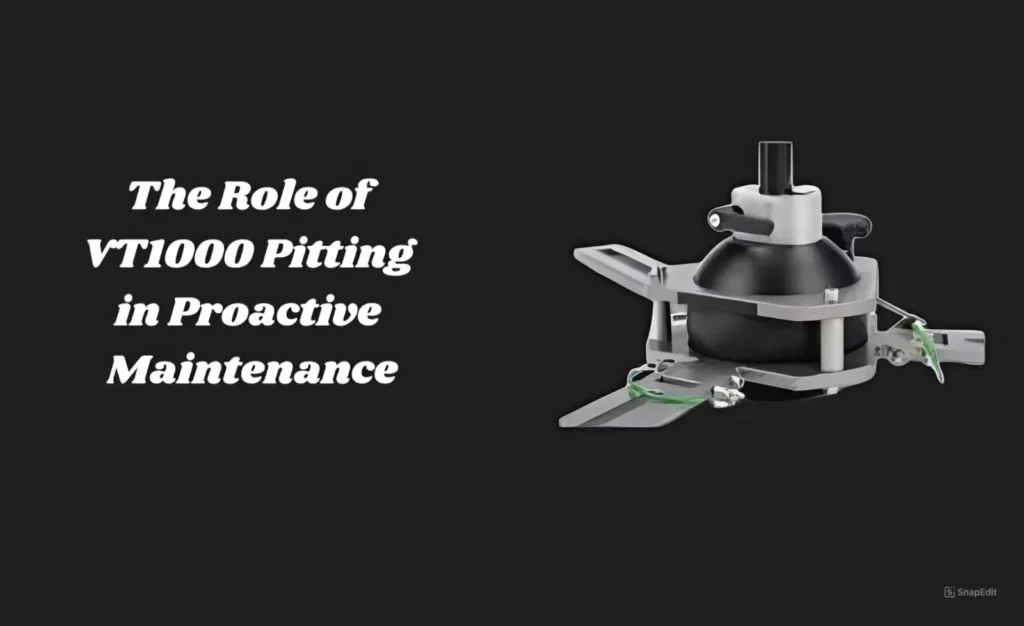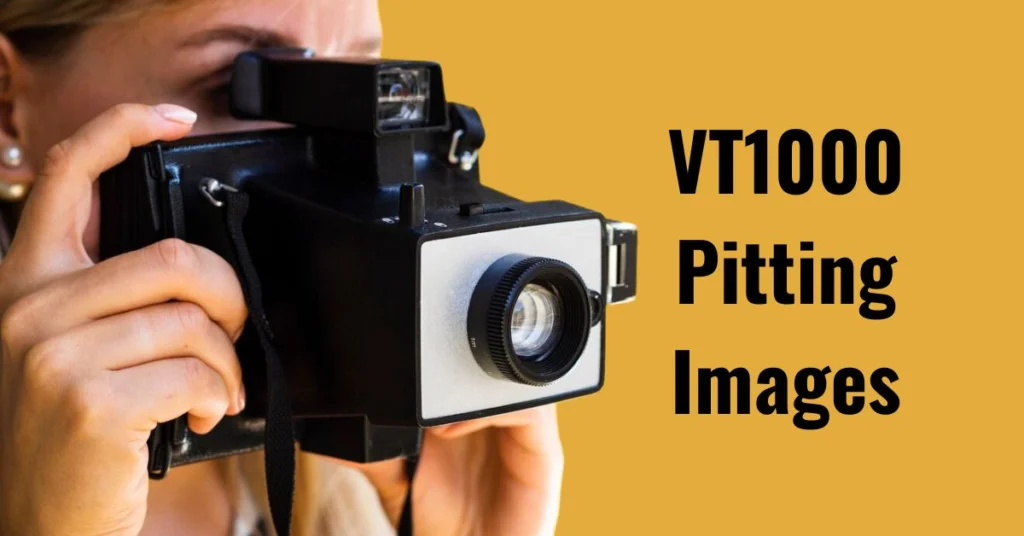Introduction
In today’s industrial world, where quality, reliability, and precision are paramount, detecting surface defects such as Vt1000 Pitting Images corrosion has become more critical than ever. Pitting corrosion, a localized form of corrosion that causes small, often undetectable holes or pits on metal surfaces, can compromise the structural integrity of materials and lead to costly repairs or even catastrophic failures.
To counter this threat, industries across the globe have turned to advanced visual inspection tools like the VT1000. VT1000 pitting images are revolutionizing the way businesses detect and address pitting corrosion, providing an unparalleled level of detail and accuracy in inspecting surfaces. Whether you’re working in aerospace, oil and gas, marine engineering, or any other sector where materials are subject to harsh conditions, VT1000 pitting images are an indispensable tool for ensuring the longevity and safety of your equipment and infrastructure.
This comprehensive guide will cover everything you need to know about VT1000 pitting images, including how they work, their importance, the benefits they offer, and how they can be applied across various industries. By the end of this blog, you’ll have a complete understanding of how to harness the power of VT1000 pitting images to protect your materials from the dangers of pitting corrosion.
What Are VT1000 Pitting Images?
VT1000 pitting images are high-resolution photographs captured using specialized visual inspection technology designed to detect surface defects, particularly pitting corrosion, on metals and other materials. The VT1000 imaging tool uses a high-quality camera combined with advanced optics to create detailed images of surface conditions, even in the most challenging environments.
Pitting corrosion, unlike general corrosion, is highly localized and often appears as small, circular holes on the surface of a material. These pits may be shallow or deep and can eventually cause significant material degradation. Over time, undetected pitting corrosion can weaken the structure, making VT1000 pitting images essential for early detection.
VT1000 pitting images are especially valuable in industries where material integrity is crucial. These images help professionals assess the extent of corrosion, measure pit depth, and determine whether maintenance or repairs are needed. VT1000’s high-resolution technology ensures that even the smallest pits are captured, giving inspectors a complete picture of the material’s condition.
The Science Behind VT1000 Pitting Images

VT1000 pitting images are produced using state-of-the-art visual inspection technology. The VT1000 inspection tool is equipped with advanced optical systems that allow for precise imaging of material surfaces, even at a microscopic level. The camera captures the image, and advanced algorithms process the data, highlighting any signs of pitting corrosion.
Here’s a step-by-step breakdown of how VT1000 pitting images are captured and analyzed:
- Surface Preparation: Before capturing the images, the surface of the material is thoroughly cleaned to remove any debris, dirt, or other contaminants that might obscure the pits. Cleaning ensures that the VT1000 pitting images offer a clear and unobstructed view of the surface.
- Image Capture: The VT1000 inspection tool is carefully positioned over the surface, and high-resolution images are taken. The tool uses a combination of light and optics to highlight any surface irregularities, including pits.
- Image Processing and Analysis: The captured images are then processed using specialized software. The software enhances the contrast, allowing inspectors to identify even the tiniest pits. Measurements of pit size, depth, and density are taken, providing critical data that helps in determining the severity of the corrosion.
The entire process is quick and efficient, making VT1000 pitting images an excellent choice for routine inspections, especially in industries where downtime must be minimized.
Why VT1000 Pitting Images Are Important for Industry
Pitting corrosion is a silent but significant threat in many industries. What makes it particularly dangerous is its localized nature, which allows it to go undetected until it’s too late. Without tools like VT1000 pitting images, many businesses risk facing:
- Material failure: Over time, pitting weakens a material, making it more susceptible to cracks, fractures, or complete structural failure.
- Safety hazards: In industries such as aerospace, marine, and oil and gas, undetected pitting can lead to accidents or malfunctions, putting lives at risk.
- Costly repairs: Addressing pitting corrosion early can save businesses substantial amounts of money. Repairs or replacements due to advanced corrosion are expensive and may also require prolonged downtimes, which further affects productivity.
VT1000 pitting images play a crucial role in helping businesses stay ahead of these risks. By providing high-resolution, accurate images, these tools allow industries to detect pitting corrosion in its earliest stages, enabling them to take preventative action before the corrosion spreads and causes irreversible damage.
How VT1000 Pitting Images Enhance Efficiency and Reduce Costs
Time is a critical factor in most industrial environments. Any delay in detecting corrosion can lead to further degradation, higher repair costs, and, in severe cases, complete operational shutdowns. VT1000 pitting images provide a highly efficient solution by enabling faster and more accurate inspections.
Here’s how they contribute to cost savings and efficiency:
1. Real-Time Monitoring and Inspection
One of the significant advantages of VT1000 pitting images is the ability to perform real-time monitoring. Businesses can capture images in real-time, process them quickly, and assess the results without the need for lengthy downtime or invasive inspections.
2. Increased Inspection Speed
Traditional methods of inspecting surfaces for corrosion often require physical contact, which can be time-consuming and labor-intensive. VT1000 pitting images, on the other hand, allow for rapid visual inspections that cover large surface areas in a fraction of the time.
3. Lower Labor Costs
By reducing the need for manual inspections, VT1000 pitting images minimize the amount of labor required for surface analysis. Fewer workers are needed, and the ones that are involved can complete the inspection process faster, leading to reduced labor costs.
4. Prevention of Expensive Failures
Detecting pitting corrosion early helps prevent catastrophic material failures that could lead to expensive repairs or even total replacement of parts or equipment. By using VT1000 pitting images, businesses can maintain their materials’ structural integrity and avoid costly repairs.
The Role of VT1000 Pitting Images in Different Industries
Now that we understand how VT1000 pitting images work, let’s take a closer look at how they are applied across various industries.
1. Aerospace Industry
In the aerospace industry, materials such as aircraft engines, fuselages, and wings are subjected to extreme stress and environmental conditions. Pitting corrosion can severely impact the structural integrity of these components, leading to potential malfunctions or accidents. VT1000 pitting images provide a non-invasive way to inspect these materials, ensuring the safety of both the aircraft and its passengers.
2. Marine Industry
Ships, offshore structures, and submarines are constantly exposed to corrosive environments, particularly seawater. Pitting corrosion in marine environments can quickly escalate into larger issues, such as hull breaches or pipeline leaks. VT1000 pitting images help maritime professionals detect corrosion early, allowing for timely maintenance and repairs.
3. Oil and Gas Industry
Pipelines, drilling equipment, and storage tanks in the oil and gas industry are highly susceptible to pitting corrosion due to exposure to corrosive substances. Regular inspections using VT1000 pitting images ensure that any pitting is identified early before it affects the flow of oil or gas, thus preventing leaks or other potentially dangerous situations.
4. Manufacturing Industry
In the manufacturing industry, especially in sectors dealing with precision machinery, the smallest amount of pitting corrosion can lead to costly malfunctions. VT1000 pitting images provide a reliable way to inspect machine components and ensure they are free from any surface defects.
How VT1000 Pitting Images Improve Safety

Safety is one of the primary reasons why businesses invest in tools like VT1000 pitting images. Pitting corrosion, if left unchecked, can compromise the structural integrity of vital components, leading to safety risks. For example, in the aerospace industry, pitting on engine components can lead to catastrophic engine failure. In the marine industry, corrosion on a ship’s hull can result in water ingress and sinking.
By using VT1000 pitting images to regularly inspect these components, businesses can identify pitting corrosion in its early stages, address the problem, and prevent potential accidents. This proactive approach helps maintain a safe working environment and protects valuable assets.
VT1000 Pitting Images: A Cost-Effective Investment
Although investing in VT1000 visual inspection tools may seem like a significant upfront cost, the long-term savings far outweigh the initial investment. The ability to quickly and accurately detect pitting corrosion leads to significant cost reductions in several areas:
- Reduced Maintenance Costs: Early detection of pitting corrosion allows businesses to perform preventative maintenance rather than waiting for a more severe problem to arise.
- Lower Repair Costs: By addressing corrosion before it spreads, businesses can avoid the costly repairs associated with replacing heavily corroded parts.
- Decreased Downtime: VT1000 pitting images reduce inspection time, allowing businesses to resume operations quickly and minimize downtime.
Future Advancements in VT1000 Pitting Imaging Technology
As technology continues to advance, the capabilities of VT1000 pitting images will likely improve even further. Some of the future trends to watch for include:
- AI Integration: In the near future, artificial intelligence (AI) could be integrated into VT1000 imaging systems to automatically analyze images and provide real-time corrosion assessments without the need for human intervention.
- 3D Imaging: Future VT1000 tools may include 3D imaging capabilities, allowing inspectors to view pitting corrosion in three dimensions and gain a deeper understanding of its severity.
- Enhanced Mobility: Advances in mobile technology could lead to more portable versions of the VT1000 tool, enabling inspectors to capture pitting images in even the most remote or confined spaces.
Conclusion
VT1000 pitting images have revolutionized the way industries detect and address pitting corrosion. By providing high-resolution, accurate visual data, these tools enable businesses to perform faster, more efficient inspections, ultimately leading to cost savings, improved safety, and better maintenance of materials.
No matter the industry—whether aerospace, marine, oil and gas, or manufacturing—pitting corrosion poses a significant risk. VT1000 pitting images offer a reliable, non-invasive solution that helps businesses stay ahead of the problem, ensuring that their materials remain in optimal condition for as long as possible.
As technology evolves, VT1000 pitting images will continue to play a critical role in maintaining the integrity of structures and equipment across the globe. If your business operates in an environment where pitting corrosion is a concern, now is the time to invest in VT1000 pitting imaging technology and take control of your material’s future.
